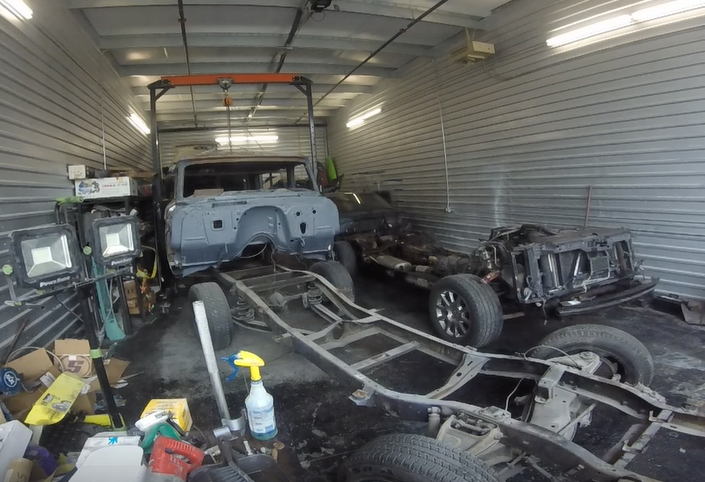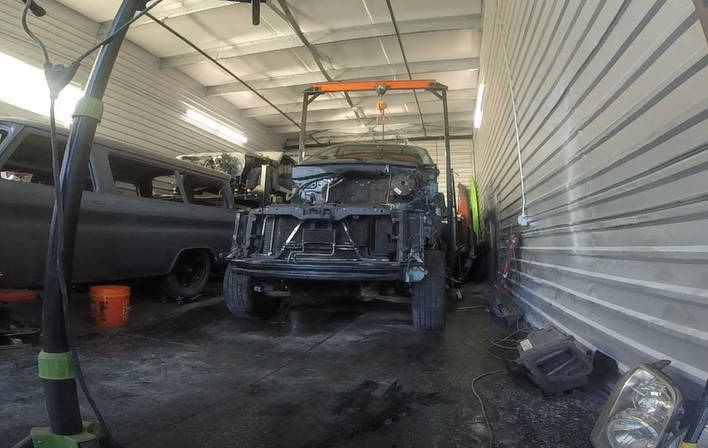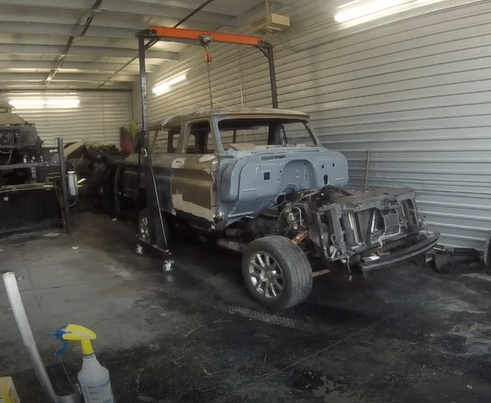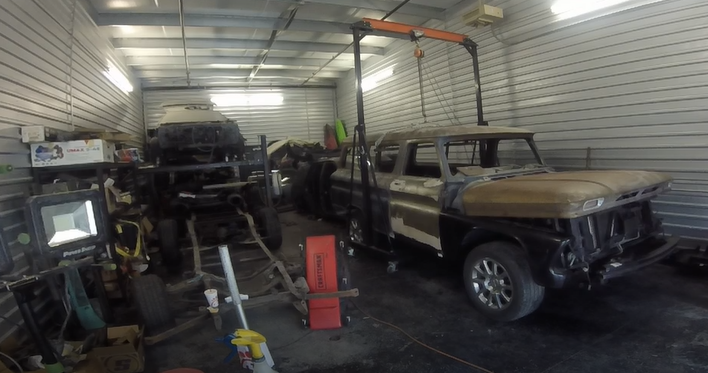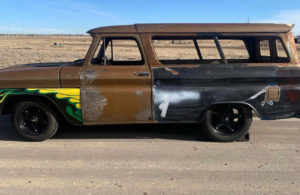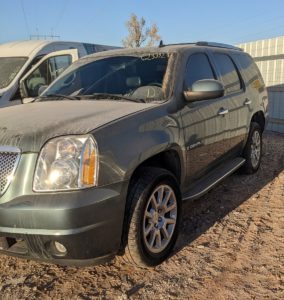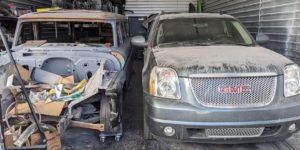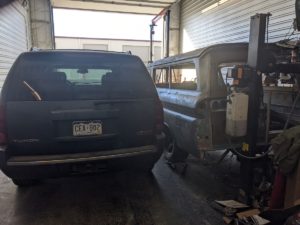1966 Suburban Chassis Swap – The Build – Part 2
Strip the Yukon body of seats and wiring harness
It was decided early on that we were going to use the front seats and the third row so as we were dismantling the Yukon we removed everything from the rear doors forward including the seats, all the wiring, the console and everything out of the dash that was needed for the new vehicle, The Yukon has a structural bar that is around 4 inches on the drivers side and 2 1/2 inches on the passenger side that holds most everything under its dash including the steering column, pedal assembly, wiring harness, most of the heater/cooling plumbing and numerous other items. The structural member was removed and fitted into the suburban.
Fab Body Mounts
Clean up the frame treat the inside paint the outside
I bought the donor Yukon on Copart and it was located in Oklahoma City, OK. I wondered at the time why it went so cheap for a 119000 mile hail damage car. After I picked it up it was pretty clear that there was a lot of corrosion on the frame, like hey I parked my Yukon in the ocean for a week. I had a number of options and considered having it dipped or blasted but those 2 processes seem more rare where I am than I ever expected. So, I pulled the body off, cut all the mounts off and pulled everything off that I could that wasn’t metal. I worked for a few weeks sanding and grinding the outside then priming and painting it with Eastwood ITEM # 11175 EXTREME CHASSIS BLACK BRAND then spent a few more days doing the same to the inside of the frame using the Eastwood Internal Frame Coating Aerosol Black. This was all some extremely dirty work and I am still working to get all the rusty dust out of my shop, note for next time, do it outside.
Replace the rear shocks and air pump
You know how you sometimes ask yourself, if I had this to do over again what would I change? This is one of those things. Not knowing this system and how complicated it is I noticed that the existing pump and the rear shocks were in pretty bad shape from corrosion so I decided to replace them. As I was doing the research I noticed there was a delete kit that replaced the rear shocks with coil-overs and added a resistance plug to the existing wiring. That is the route I should have gone. Let me explain why. This system is the Z55 Autoride Suspension option that uses the Electronic Suspension Control (ESC) system to make changes to each of the four shocks in milliseconds as you drive, adjusting the stiffness and handling of the suspension. This RPO also includes rear auto-levelling air shocks and a compressor, which can often be the failure point for these suspensions. The system is tied into the GMLAN bus and uses a number of sensors including a lateral sensor under the seats. The GMLAN bus system as I described in the kickoff to this series is a serial system that requires all the components to be plugged in for it to work. My first mistake was removing the OnStar system without knowing it was going to break GMLAN. I overcame this by jumpering the tan/tan-black wires at the intermediate relay panel. I also moved the lateral sensor while I was moving the seats. Ultimately to make a long story short, I will probably bite the bullet and remove this system all together and try to recover some of my costs by selling the shocks and pump on Marketplace.
Mount the body
Fab the firewall
Mount the front crossmember, Seats and wiring harness

